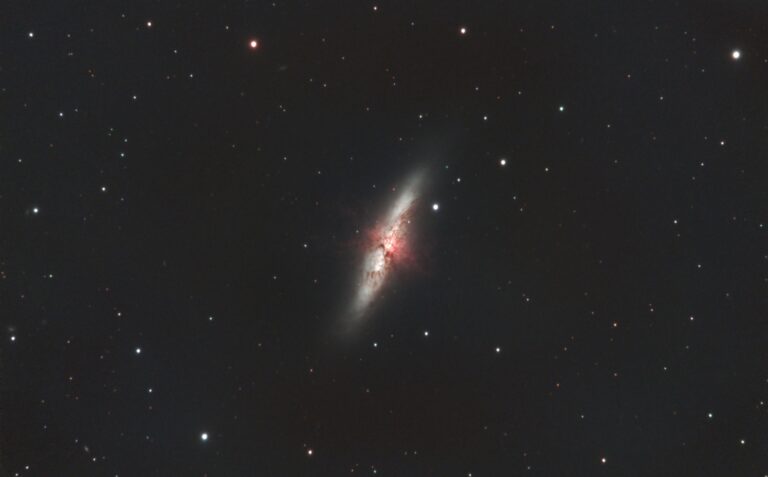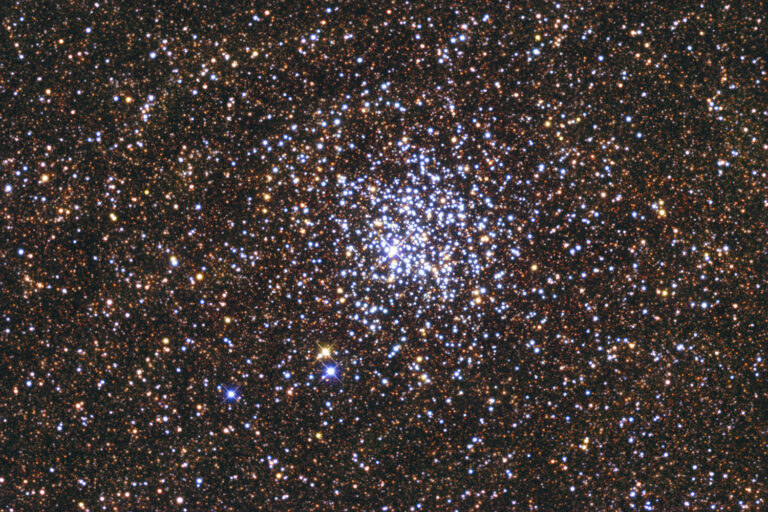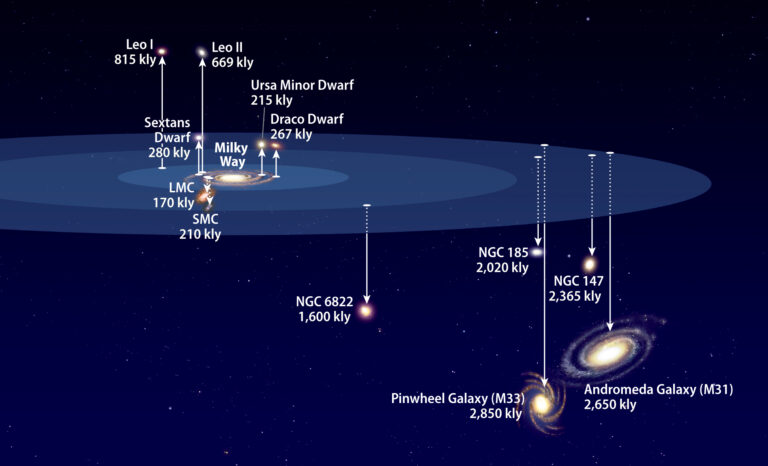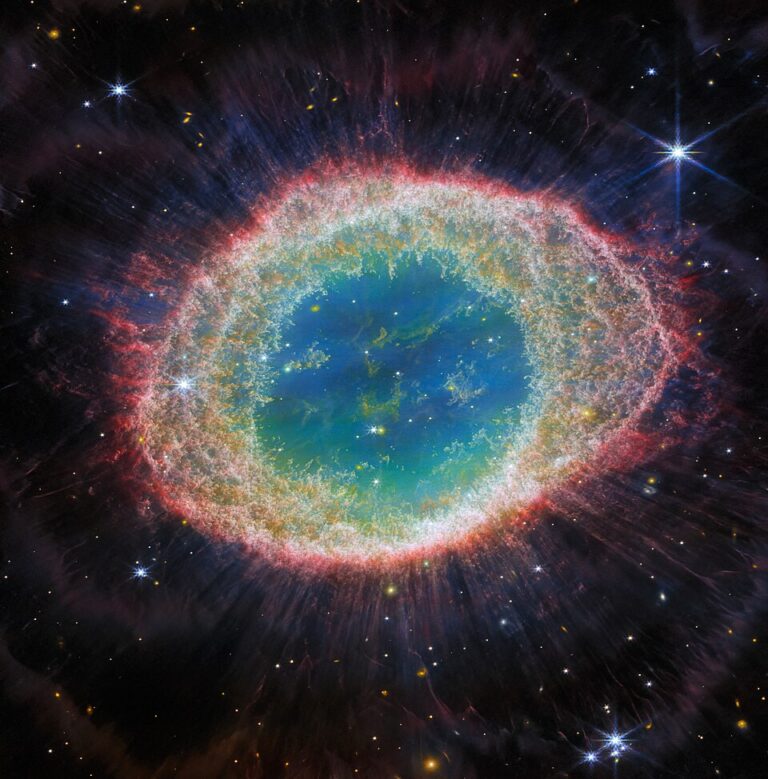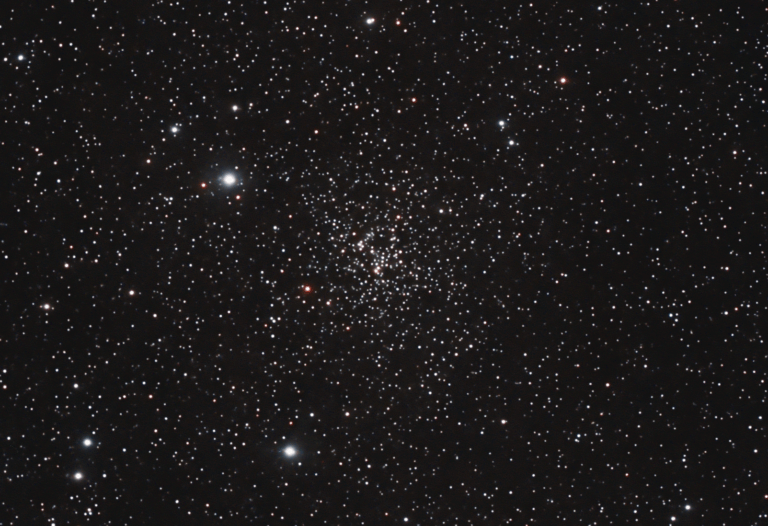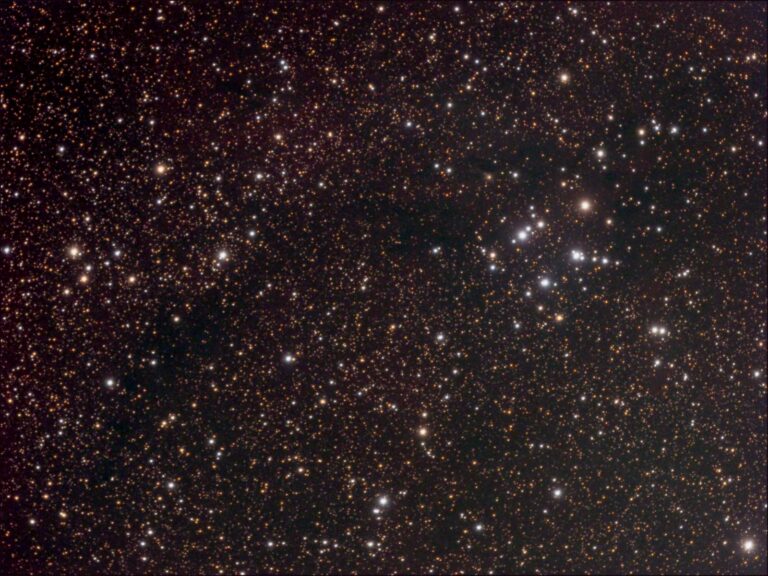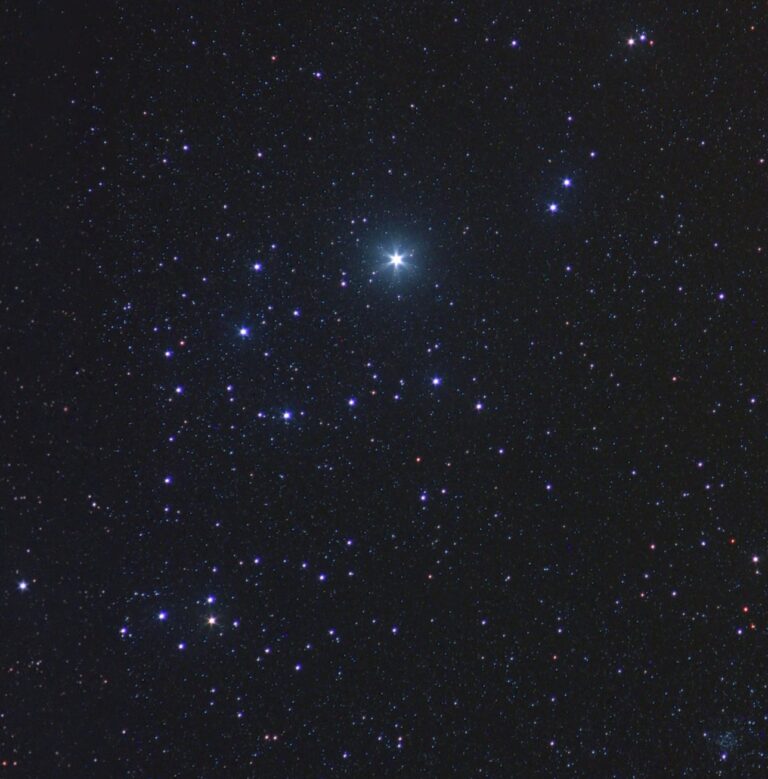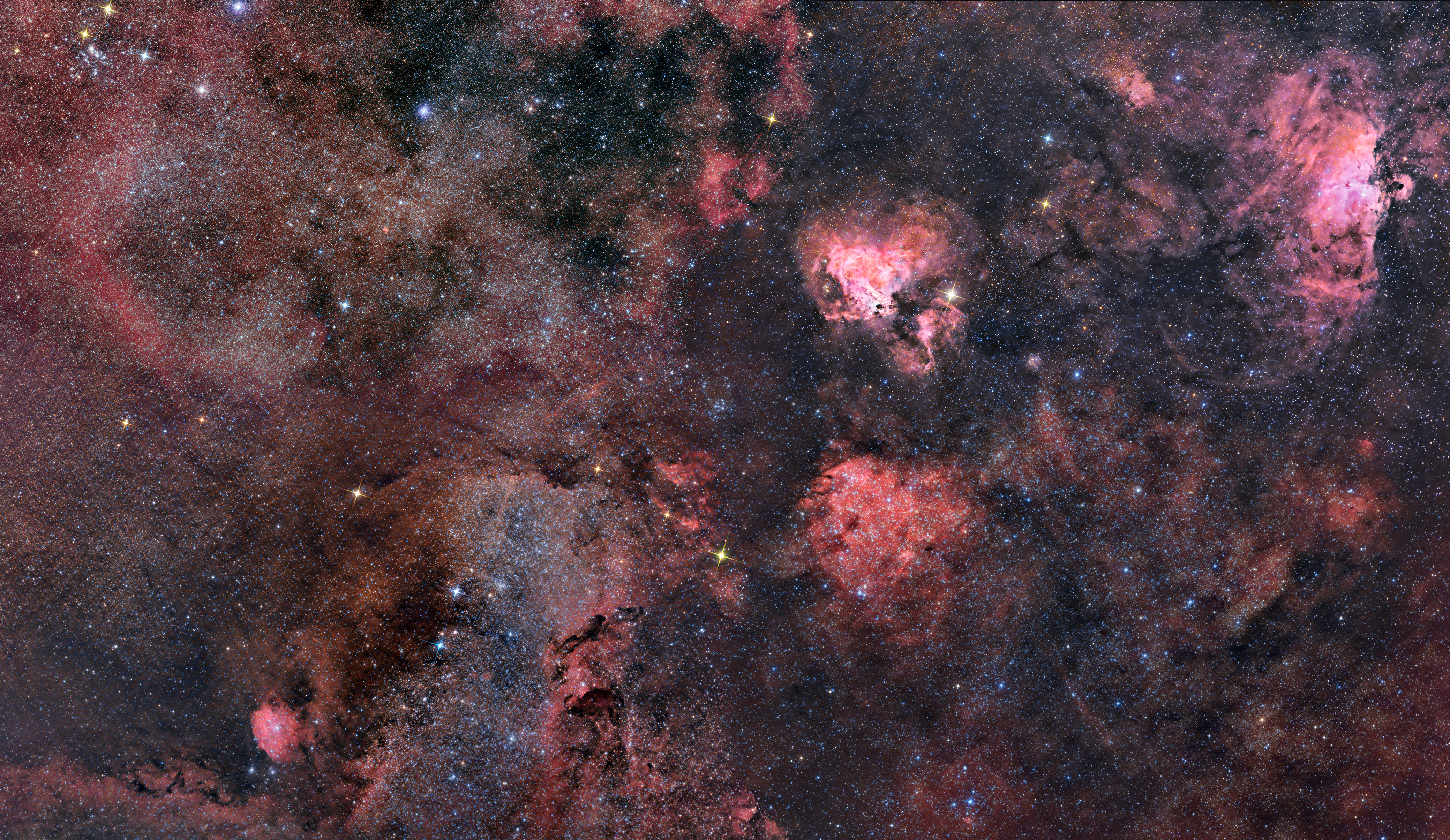
Key Takeaways:
Many good things come in threes: the Three Musketeers, the Three Tenors, movie and book trilogies, and more. There seems to be something symmetrical, beautiful, and satisfying when using the power of three.
With that mindset, I was immediately impressed by my first glimpse of the European Southern Observatory’s 2017 release of a mosaic image, titled “VST Captures Three-In-One.” These objects — the Swan Nebula (M17) in Sagittarius, and the Eagle Nebula (M16) and Sharpless 2–54, both in Serpens — are part of the summer Milky Way. The mosaic consists of images taken by the VLT Survey Telescope (VST), atop Cerro Paranal in Chile.
Commissioned in 2011, the VST has a 2.6-meter mirror feeding a 268-megapixel camera that delivers wide-angle images covering a 1° by 1° area of the sky. But even that wasn’t big enough to make the mosaic, which covers an area about 6° by 3°. Examine the image above and you’ll see the three nebulae splashed across the panorama. As soon as I saw the image, I wondered how much of it I could actually see.
Most importantly, you must observe beneath a dark sky to appreciate what this image has to offer. I observed from a hilltop near SkiesAway Remote Observatory about 35 miles (56 kilometers) northwest of Paso Robles, California, under Bortle class 2 skies. I employed binoculars and small (3.2-inch), medium (6-inch), and large (14- and 17.5-inch) telescopes, and was delighted in what I could tease out of the sky.

Binoculars first
Let’s examine the three nebulae in the image starting from the south and working north. Just outside the southern boundary of the image (left side), are three bright objects almost in an east-west line that form a visual “barrier” to the three nebulae: M25, M24 (also known as the Small Sagittarius Star Cloud), and M23. I aimed my 8×42 wide-angle (7° field of view) binoculars at M24 and scanned north. With the top of M24 at the bottom of the field of view, the entire region was visible, and I felt as if Gomer Pyle was shouting, “Surprise, surprise, surprise!” in my ear.
Through these modest binoculars I could see the nebulosity associated with M17 plus the emission cloud IC 4701 to its west. M16 was also visible, seeming brighter than M17, at least at its core. I also saw open cluster NGC 6604, which is surrounded by emission nebula Sh 2–54. At the bottom edge of the field was the small open cluster M18.
The view was unexpectedly good, so I switched to tripod-mounted 10×70 binoculars. Starting back at M24, I could clearly see three dark nebulae along the northwestern side of the star cloud, and a fourth seemed to be fading in and out. The four dark nebulae are Barnard 307, 93, 92, and 304.
Through the 10×70s, the telltale shapes of M17 and M16 were even more pronounced. Sh 2–54 was faint but directly visible, though I couldn’t resolve stars in NGC 6604. It was just a small, bright knot. To the east of Sh 2–54, the dark nebula B95 was clearly visible.
Two other emission nebulae lie nearby. Both are rather small and quite difficult to see. About 3° west of M16 is Sh 2–46 (not in the image). And Sh 2–53 lies about 1.5° northeast of M16. The loose open cluster NGC 6625 was also visible. It’s 0.5° wide and about 1.5° east of NGC 6604.

Telescopic enhancement
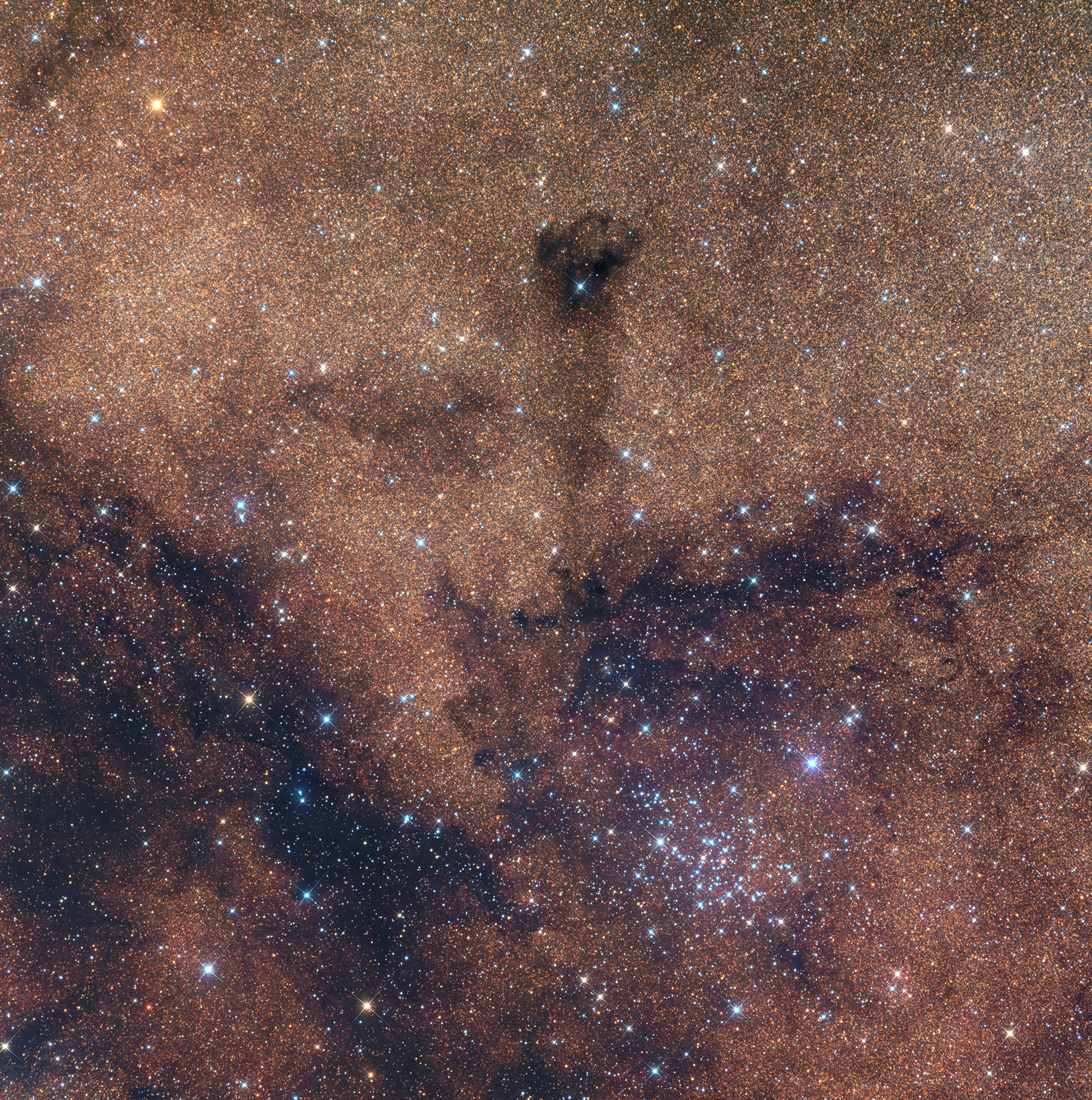
I then switched to my short-focal-length 3.2-inch refractor. With a 22mm eyepiece, it gives a magnification of 23x. Mostly, it confirmed my binocular sightings and offered higher-resolution views of the vista broken into about three sections — nothing new, but all brighter.
Next, I used my 6-inch f/8 refractor to zero in on some of the smaller targets. Trumpler 32 was easy to see with a 22mm eyepiece (55x) about 1° north-northwest of M16. This cluster looked like a small, round patch of background glow. Higher powers revealed a few individual stars, but the faint glow remained.
Boosting the power to 70x (17mm eyepiece) gave spectacular views of both M17 and M16. M17 is so named because it looks like its namesake swan, while M16 looks like an eagle with outstretched wings.
I noted both these visual impressions clearly, and each was enhanced with an Oxygen-III filter. Interestingly, a Hydrogen-beta filter worked almost as well, especially on M16.
Eyes of the Eagle
Through both the 3.2-inch and the 6-inch, I noticed that the two brightest stars in NGC 6611, the cluster associated with M16, have a truly haunting appearance. They are identical in brightness and spaced close together. To me, they looked like a pair of ghostly eyes peering back from the Eagle’s tilted head.
While I examined M16, I wondered if the Pillars of Creation were visible. In a word: almost. I experimented with higher magnifications (up to 240x) with and without nebula filters. At about 86x (14mm eyepiece), I could start to see brighter and darker linear markings in the brightest part of the nebula. There was something there, but I couldn’t make out a definite shape that I would call a pillar.
So, I dragged out my 14-inch SCT; still no luck recognizing a pillar. Next, I brought out the 17.5-inch reflector. Again, I could tell something was there but I couldn’t point to a feature that you’d recognize as a pillar.
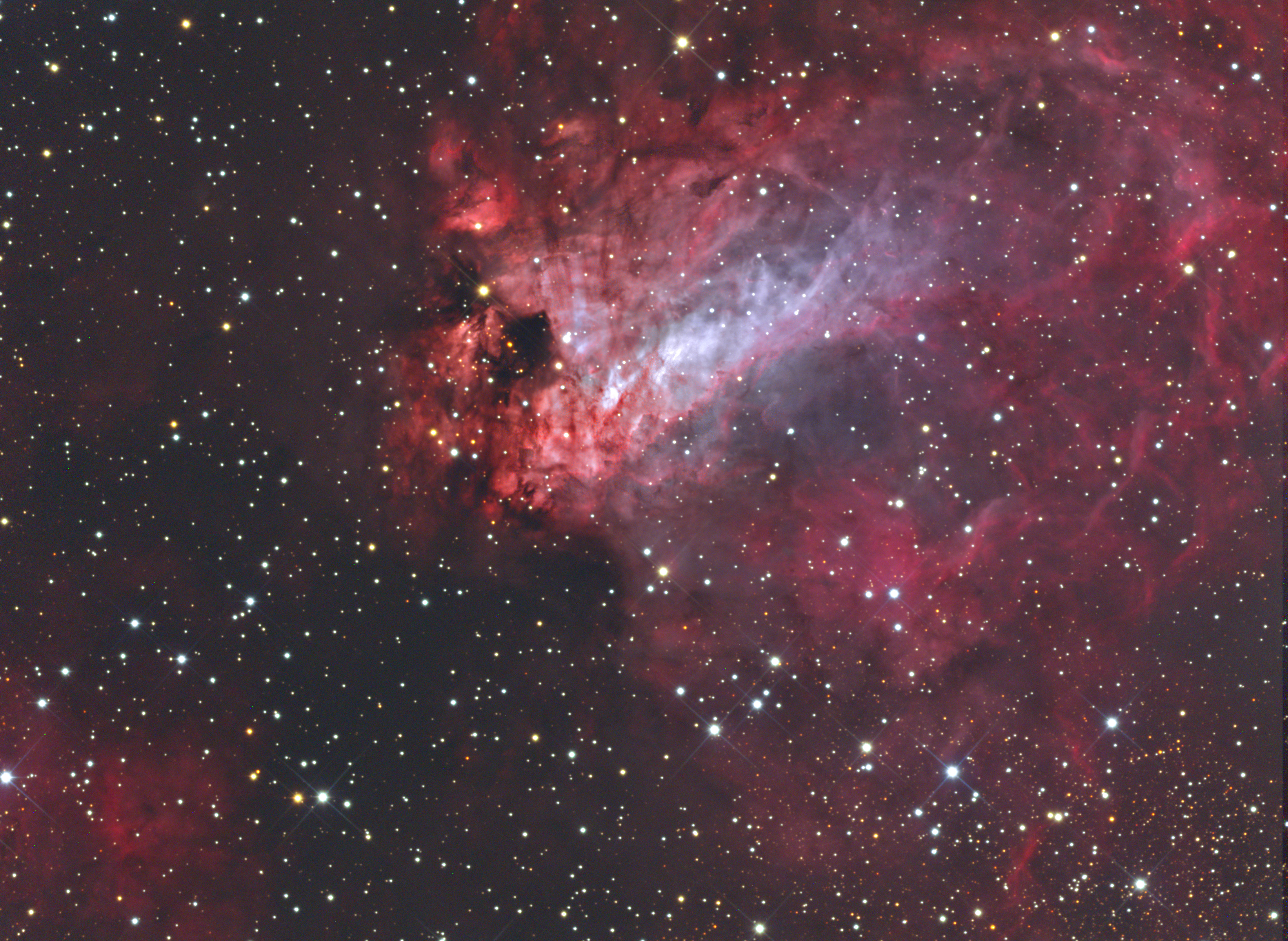
Textured nebulae
Taking the time to bring out the big guns was well worth it. The views enhanced the amazement I felt at the binocular observations of the VST’s three nebulae. Through the larger scopes, the brighter portions of M17 and M16 increased in texture — I could see ripples in the gas clouds and dark dust lanes intruding into the glowing gas. I didn’t notice a larger extent of the nebulae, but rather enhanced definition within the previously visible area. Through the 17.5-inch with an OIII filter, the dark nebula shaping the northern portion of M16 seemed three-dimensional. Unfortunately, there’s no way to see the faint nebulosity of Sh 2–54 in these scopes, although careful observation revealed a few internal ripples that are part of the nebula.
I’m adding these targets to my bucket list to track down from the Southern Hemisphere, where they’re higher in the sky. From central California, at their highest, around 11 p.m. in early July, these objects are about 45° above the southern horizon – OK, but not ideal. Observing in the Northern Hemisphere, I generally don’t try to pick out fine details unless the object is 15° higher than this.
There are other targets to chase in and near the VST image. Two loose open clusters lie near M17: NGC 6596 sits 1° southwest, next to the emission region IC 4701; and NGC 6561, which is 2.5° west of M17. Both are within reach of the 6-inch telescope. Another open cluster is NGC 6645, about 3° east and slightly south of M17. This 15′-wide ball of many fine stars looks like a small version of the Wild Duck Cluster (M11) and glows relatively brightly at magnitude 8.5.

The Dark Toad
If you look at the right (north) side of the VST image, you’ll see a bright knot of nebulosity in Sh 2–54, almost directly north of NGC 6604. Visually, this is a faint circular area, more of an outline than a patch through the 6-inch with an OIII filter.
Next, go back to NGC 6604 on the image. Look west — about halfway from the cluster to the bottom of the frame, you should see a dark outline surrounded by a rim of brighter emission. If you enlarge the image online, you can see a shape that I nicknamed the Dark Toad Nebula because it looks like a frog sitting on a lily pad. Through the 6-inch, it’s like the pillars: I can tell something’s there but can’t quite make it out.
Observe!
With just decent binoculars under a dark sky, you can enjoy the VST’s three nebulae and a lot more. After spending a few nights chasing objects in this vista, I have yet more targets I want to track down in addition to the desire to definitively see the Pillars of Creation. Set your goals according to your optics, but by all means, head out to observe soon. Clear skies!


